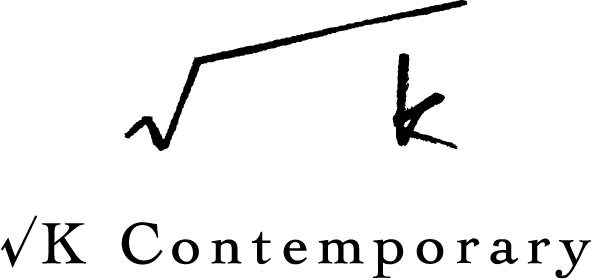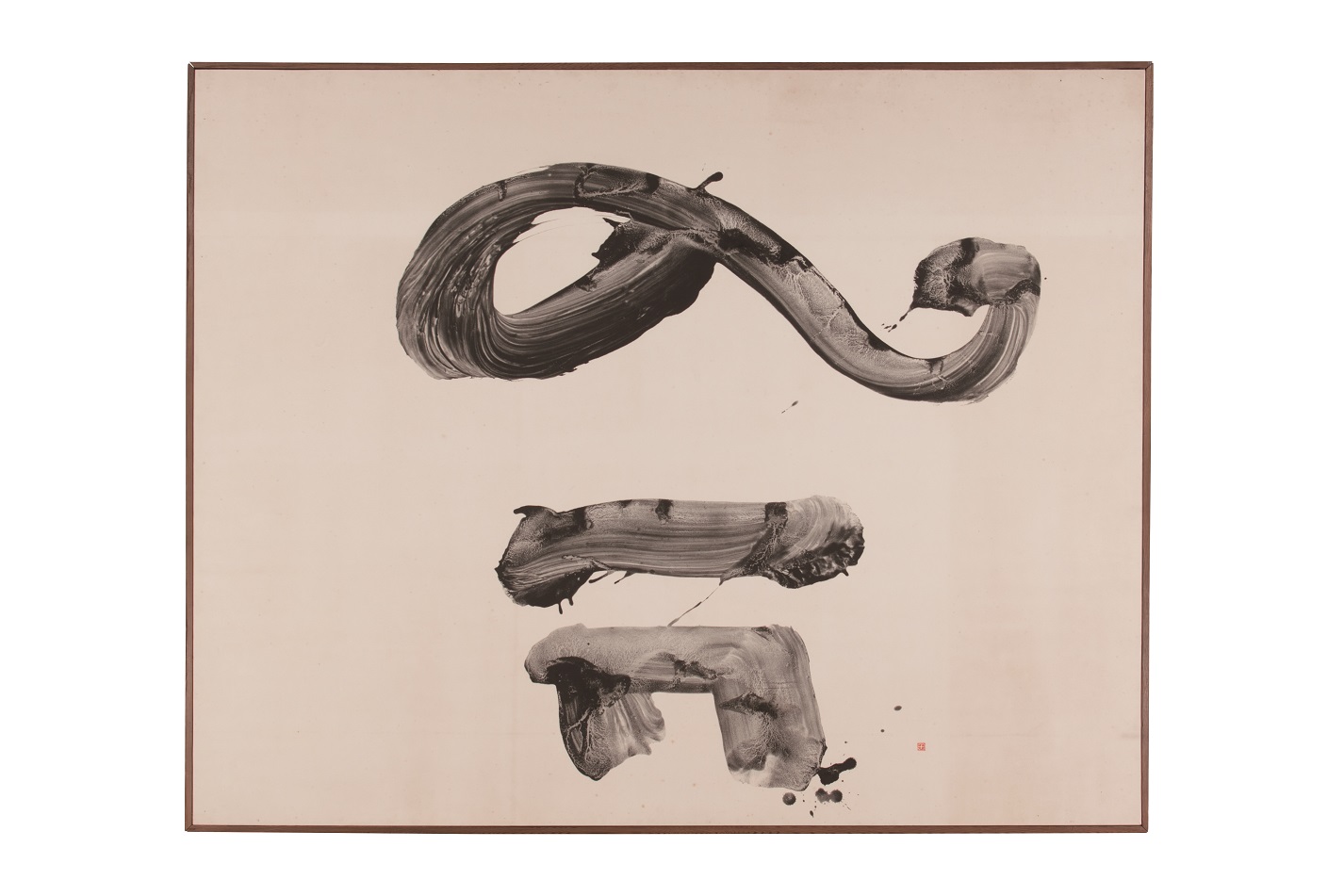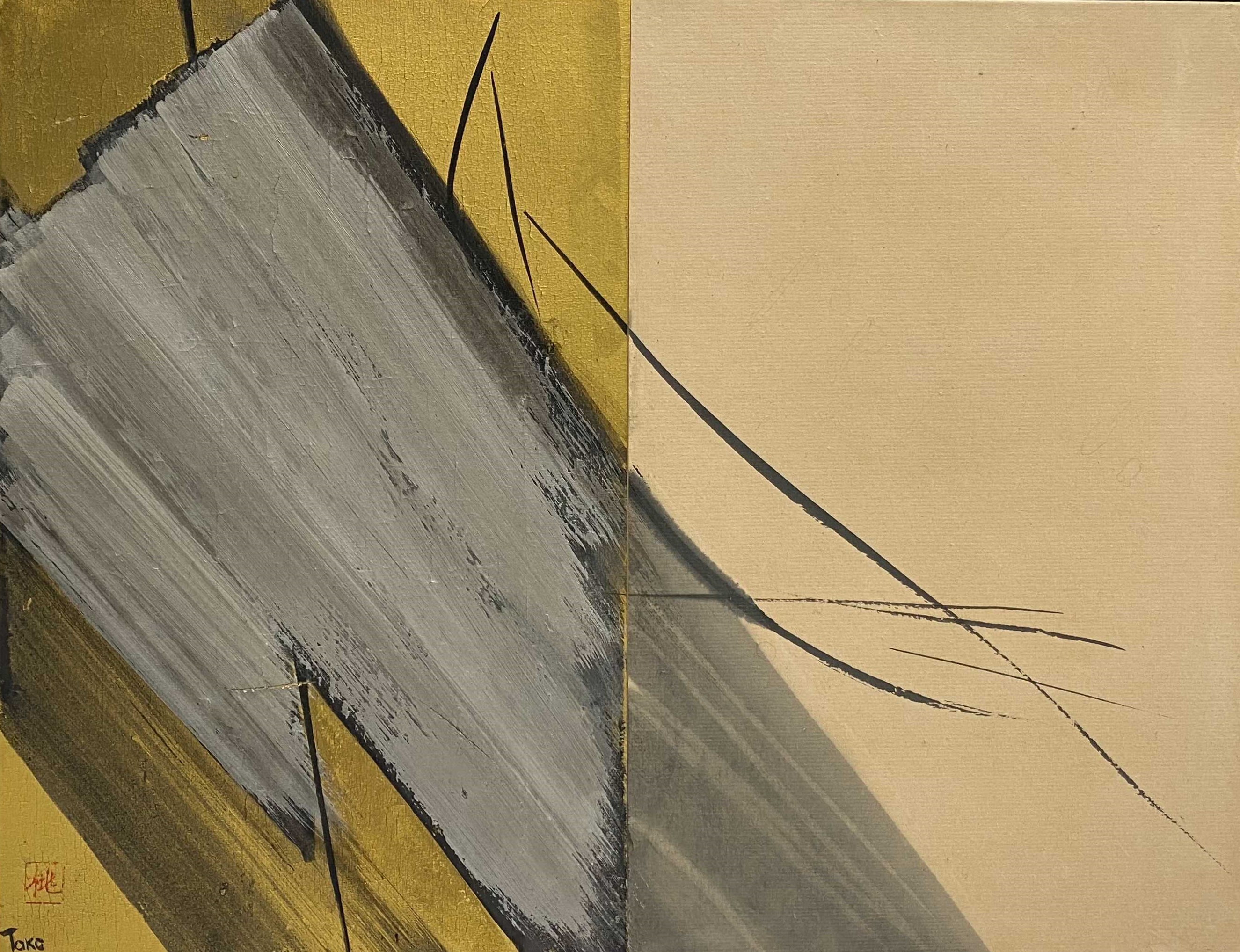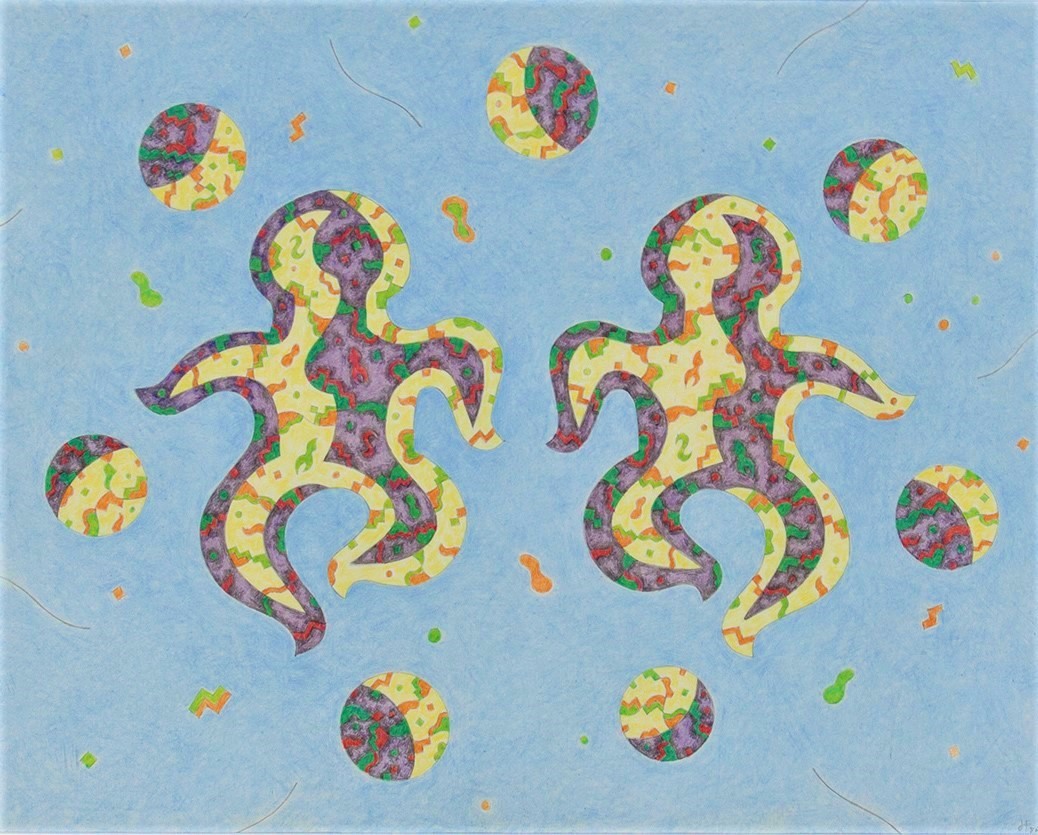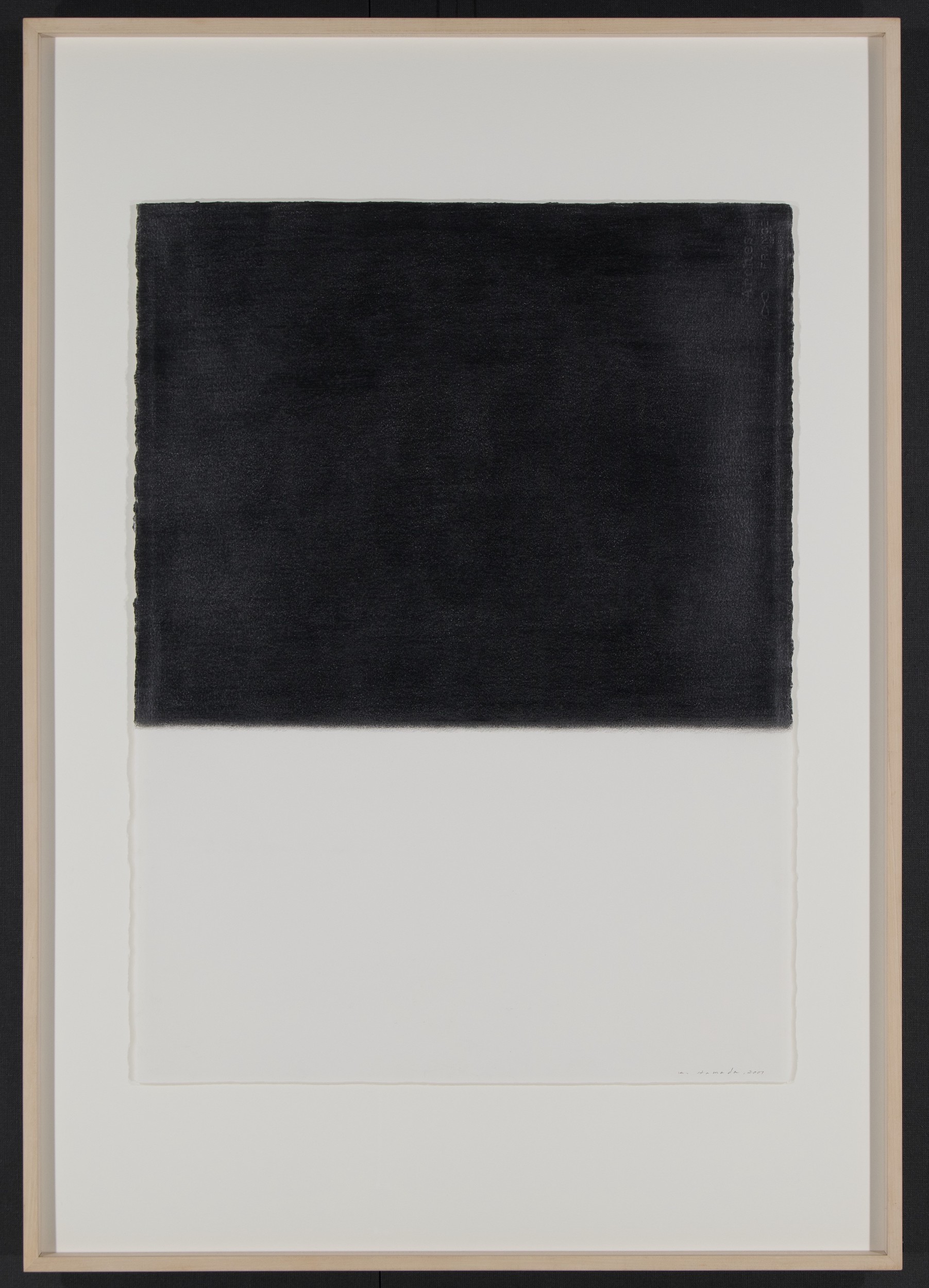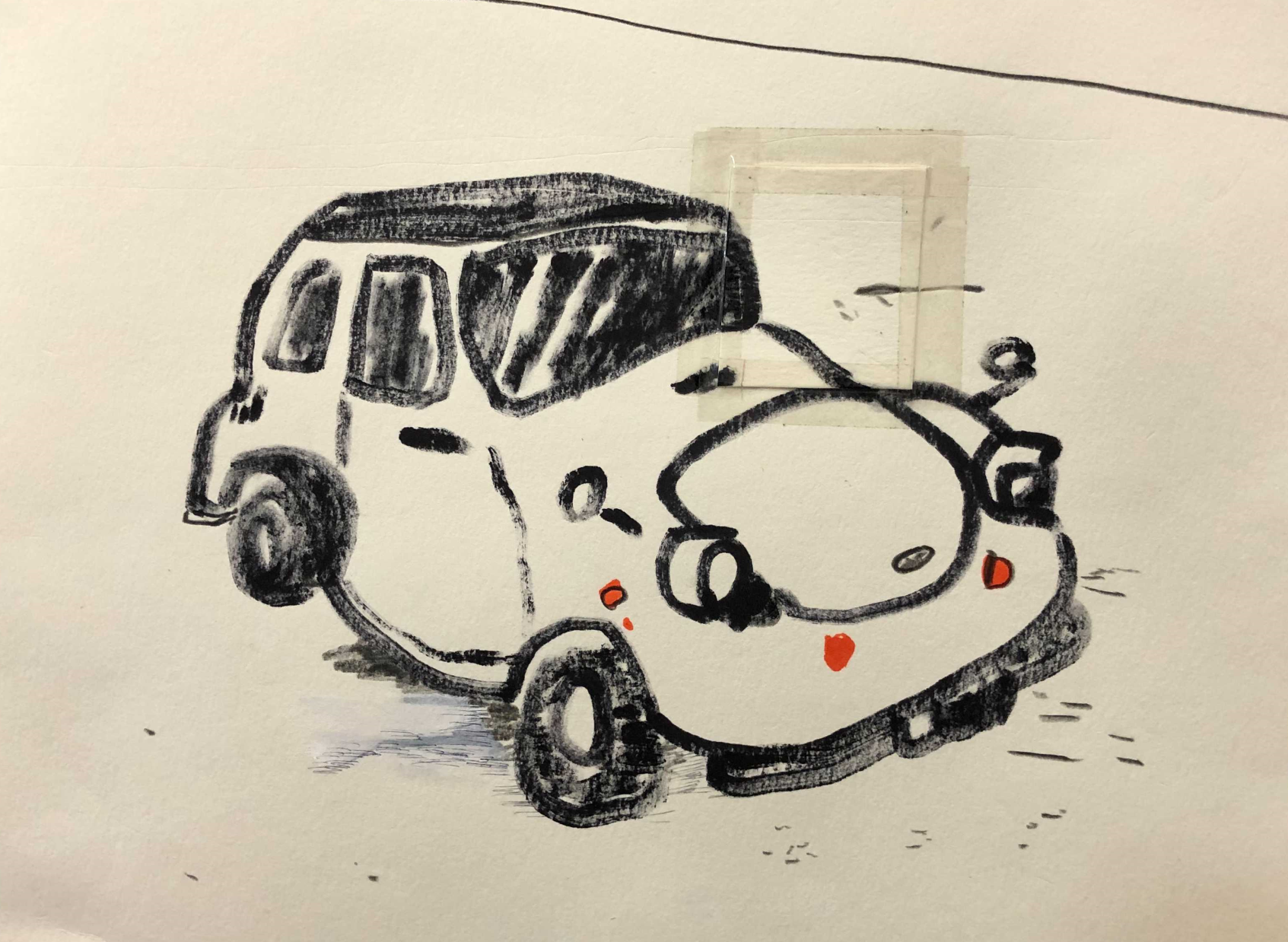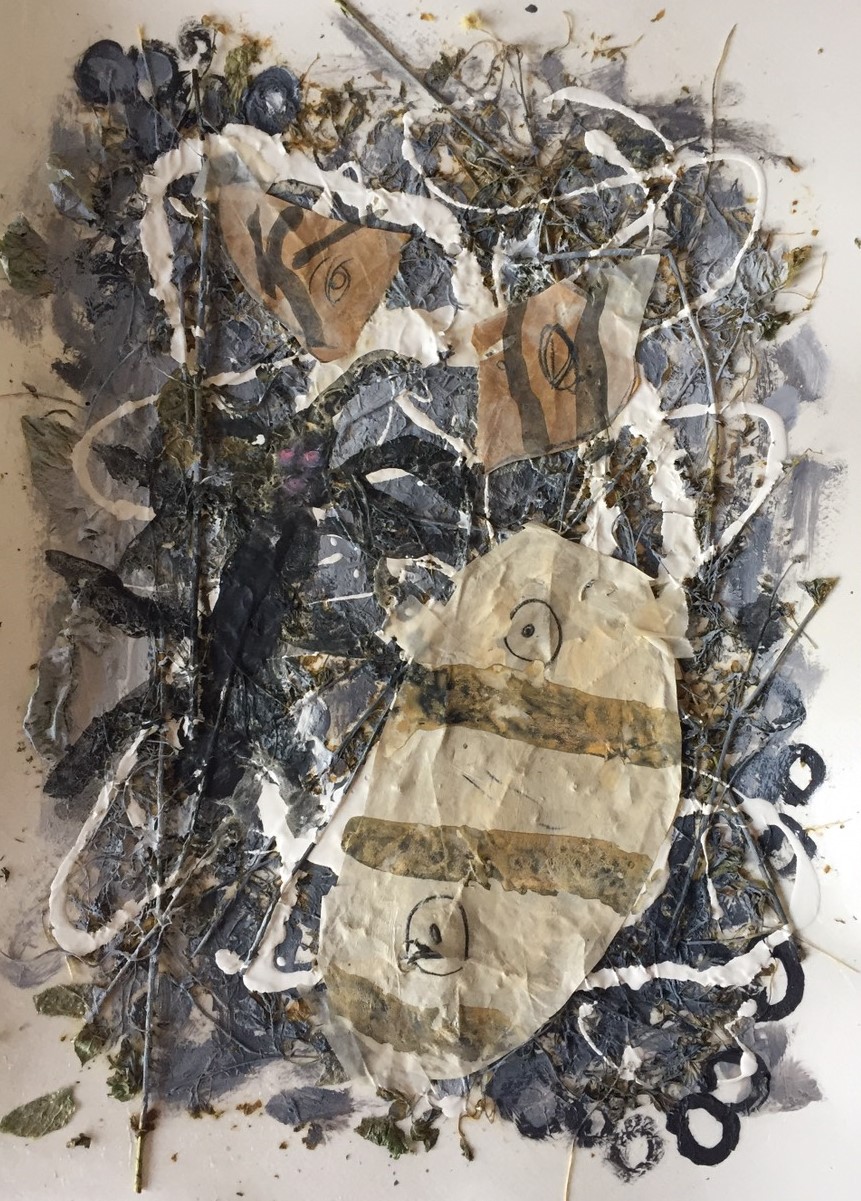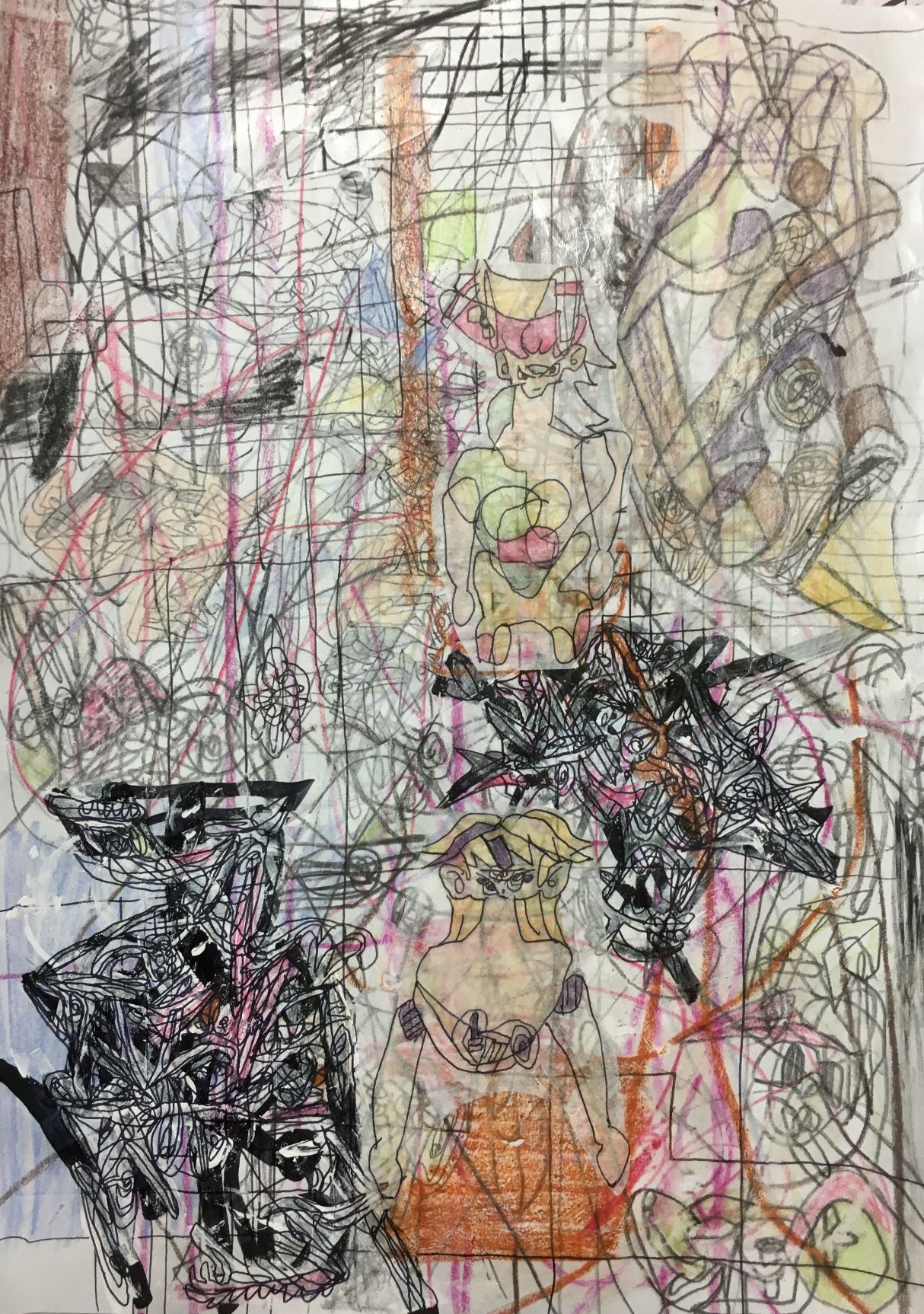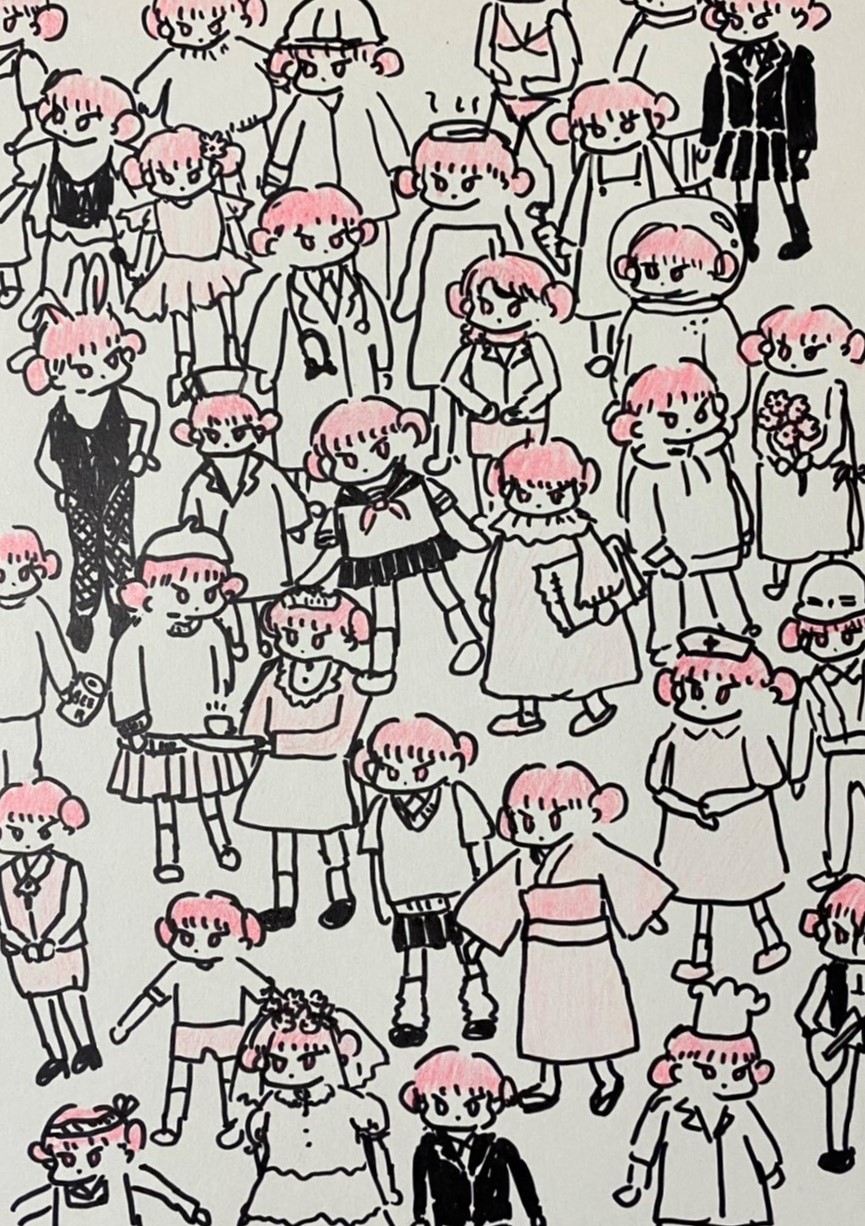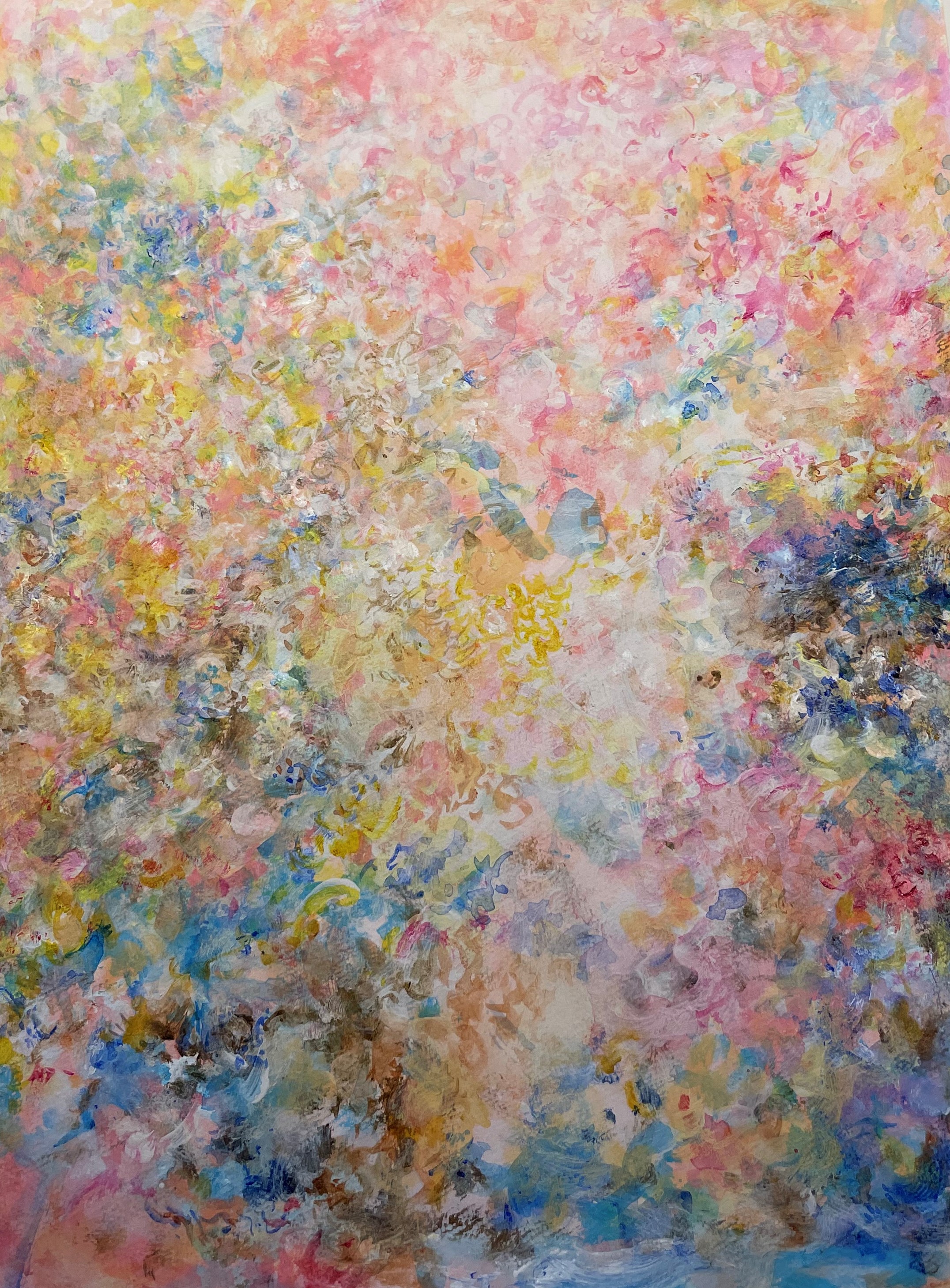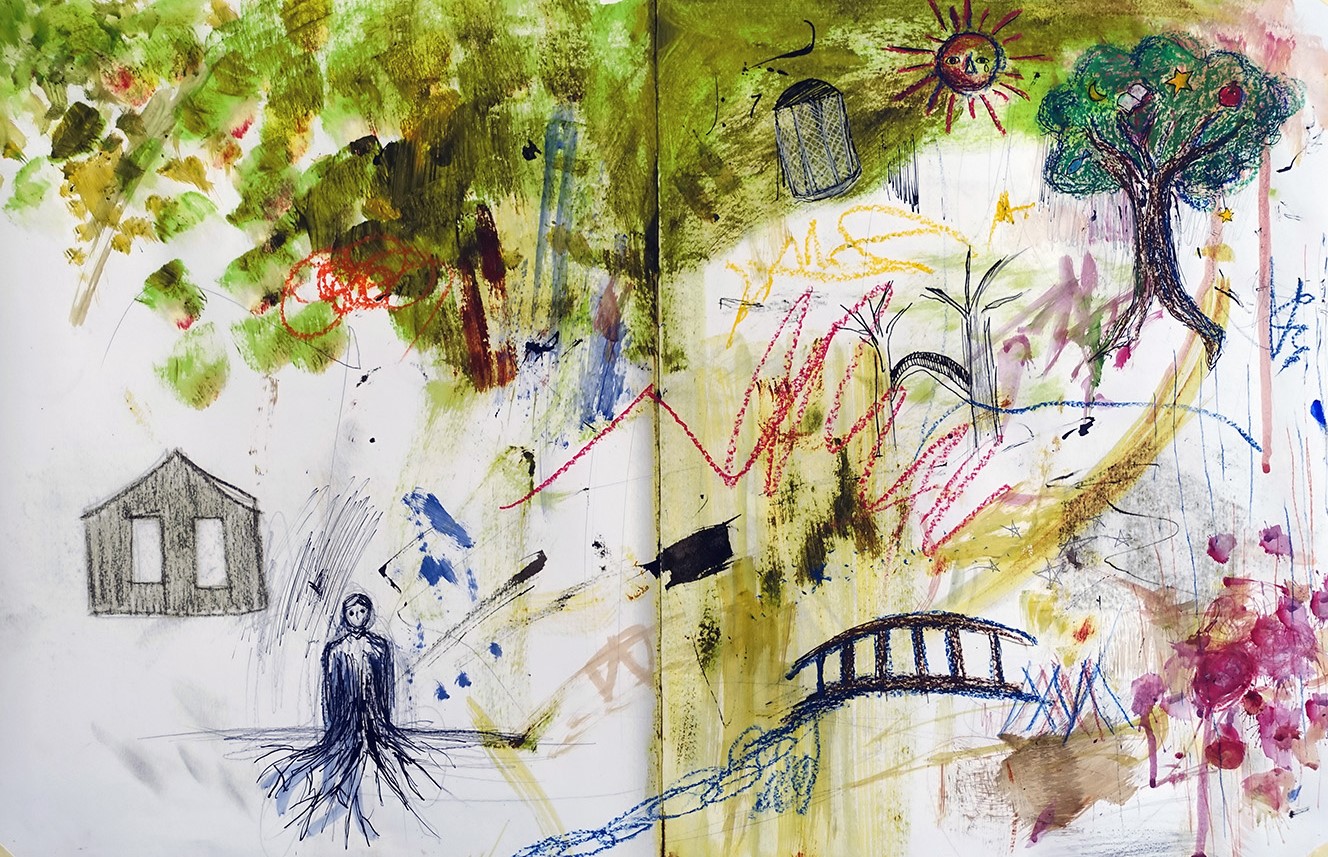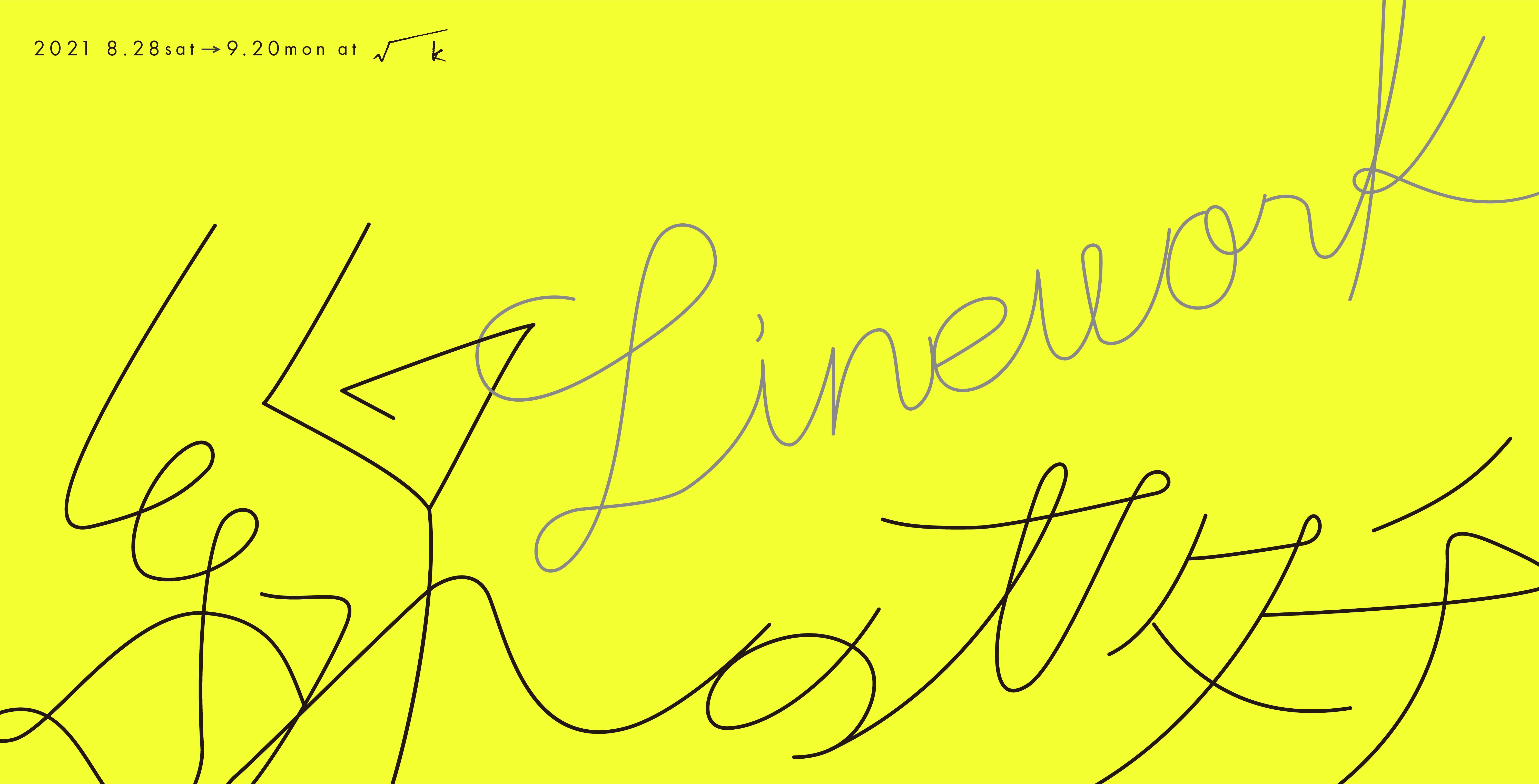

Linework
Venue|√K Contemporary (Minamicho 6, Shinkuku-ku, Tokyo)
Dates|8.28 (Sat) – 9.20 (Mon)(Closed Sundays & Mondays / Open on Public Holidays)
Exhibiting Artists|Asako Hoshikawa, C-Botsu, Fumiaki Akahane, Naoto Kumagai, Nankoku Hidai, Kanji Yumisashi, Kiyoshi Hamada, Kosuke Ikeda, Nankoku Hidai, Pelonmi, Rie Ono, Sohyun Park, Tanpakushitsu, Toko Shinoda, Toshimitsu Imai, Waichi Tsutaka and more
Exhibiting Works|152 works
Support|Tenrai Shoin Co. Ltd, CAVE-AYUMIGALLERY
For installation views & images of works, please see our Ocula & Artsy page.
Artsy Page|https://www.artsy.net/show/k-contemporary-1-linework
※Depending on the state of COVID-19, business days and hours are subject to change. Please check updates on the √K Contemporary website, Facebook, Instagram, or Twitter periodically for updates.
On the Exhibition
The crux of Linework stems from the fundamental role of lines in “drawings” as a liberal form of expression.
Inspired by the ideas of the avant-garde calligrapher, Nankoku Hidai, the exhibition’s premise originates from his notion of “Shin sen (spirit line)”. Nankoku, who argued that “the essence of …calligraphy is the expression which depends on a disciplined stroke regardless of the medium”, viewed the lines as a full and unified mode of expression. Forging the “avant-garde calligraphy” movement, Nankoku broke away from the traditions of an orthodox artform and launched an unprecedented and continued wave of innovation.
With this, Linework invites viewers to re-examine the act of drawing through the fundamental role of the line. The deceptively simple act of line-making is a crucial device that evolves with each artist and can differ greatly upon how, where, and when they’re drawn. An exhibition that, in essence, strives for the continuation of Hidai’s lifelong endeavor, Linework was planned with the hopes of breaking past conventions for the development of new, liberated modes of thought and expression. By addressing the line as an unbound expression of infinite possibility, Linework welcomes viewers to discover the point at which line becomes art.
IMAGES
-
Nankoku Hidai, 64-3 (1964)
-
Toko Shinoda, For the Silver E (1966)
-
Hiroshi Fujimatsu, Untitled (ca. 1990)
-
Kiyoshi Hamada, Drawing No. 65 (2001)
-
Kanji Yumisashi, Subaru 360 (2021)
-
Fumiaki Akahane, Disassembled man (2021)
-
Naoto Kumagai (2021)
-
C Botsu (2021)
-
Asako Hoshikawa, HelloWork (2017)
-
Rie Ono, Garden in Spring (2021)
-
Pelonmi, hey I love everyone (2021)
-
Sohyun Park, Drawing_03 (2017)
ARTISTS
1912: Born in Kamakura, Kanagawa prefecture under the name Susumu Hidai.
1934: Graduates from Tokyo Higher Polytechnic School
1999: Passes away October 15th at 87 years old.
Nankoku studied calligraphy under his father, Tenrai Hidai. Following his father’s death, the artist inherited his father’s calligraphy research institute, “Shogakuin”. With this, he began managing thousands of precious cultural artifacts whilst simultaneously reopening the Shogakuin Publishing Department, which published high-quality literature for the purpose of education. In 1945, he created the first avant-garde work in the history of calligraphy, “Den no Variation” (lit. Lightning Variation), and displayed it the following year, shocking contemporaries.
Having held many solo exhibitions in both Tokyo, New York and other major cities, the artist has been invited to participate in contemporary exhibitions and his work has been bought by several prominent collectors, i.e., by MoMA New York.
In addition, Hidai has given talks on calligraphy in 20 universities, such as Princeton and Oxford.
Official Site: http://www.shodo.co.jp/nankoku/
1912: Born in Kamakura, Kanagawa prefecture under the name Susumu Hidai.
1934: Graduates from Tokyo Higher Polytechnic School
1999: Passes away October 15th at 87 years old.
Nankoku studied calligraphy under his father, Tenrai Hidai. Following his father’s death, the artist inherited his father’s calligraphy research institute, “Shogakuin”. With this, he began managing thousands of precious cultural artifacts whilst simultaneously reopening the Shogakuin Publishing Department, which published high-quality literature for the purpose of education. In 1945, he created the first avant-garde work in the history of calligraphy, “Den no Variation” (lit. Lightning Variation), and displayed it the following year, shocking contemporaries.
Having held many solo exhibitions in both Tokyo, New York and other major cities, the artist has been invited to participate in contemporary exhibitions and his work has been bought by several prominent collectors, i.e., by MoMA New York.
In addition, Hidai has given talks on calligraphy in 20 universities, such as Princeton and Oxford.
Official Site: http://www.shodo.co.jp/nankoku/
Born in 1937, Kochi, Japan.
Following graduation from Tama Art University in 1961, Hamada became acquainted with the great avant-garde artists of post-war Japan, such as Yoshishige Saito, and began pursuing abstract modes of expression. He was awarded an Honorable Mention at the Osaka Biennale of Prints Competition of 1977 and, with much acclaim, has been active in various domestic and international exhibitions. In 2015, his solo exhibition, “The Legacy of Kiyoshi Hamada – Paintings of Layering and Erasing”, was held at the Nerima Art Museum. Hamada’s works have shown and developed great promise over the years, and his works have been acquired by various museums, such as the National Museum of Modern Art, Tokyo (Japan), Museum of Contemporary Art, Tokyo (Japan), Artizon Museum (Tokyo, Japan) and the Kraków Museum of Art (Poland).
Born in 1937, Kochi, Japan.
Following graduation from Tama Art University in 1961, Hamada became acquainted with the great avant-garde artists of post-war Japan, such as Yoshishige Saito, and began pursuing abstract modes of expression. He was awarded an Honorable Mention at the Osaka Biennale of Prints Competition of 1977 and, with much acclaim, has been active in various domestic and international exhibitions. In 2015, his solo exhibition, “The Legacy of Kiyoshi Hamada – Paintings of Layering and Erasing”, was held at the Nerima Art Museum. Hamada’s works have shown and developed great promise over the years, and his works have been acquired by various museums, such as the National Museum of Modern Art, Tokyo (Japan), Museum of Contemporary Art, Tokyo (Japan), Artizon Museum (Tokyo, Japan) and the Kraków Museum of Art (Poland).
Born in 1922, Nagano, Japan.
Fujimatsu graduated from Tokyo Higher Normal School in 1945 and participated in the progressive, unjuried annual Yomiuri Independent Exhibition 9 times. His works gradually gained mass acclaim, through the recognition of renowned art critics such as Shuzo Takiguchi, a poet, painter, and one of the key surrealists of pre and post-war Japan. He held his first solo exhibition at Gallery Takemiya, Tokyo in 1953 and, after spending 2 years and a half in New York, returned to Japan in 1961 and presented new series, “Traveler”. He passed away in 1996 at the age of 74.
Born in 1922, Nagano, Japan.
Fujimatsu graduated from Tokyo Higher Normal School in 1945 and participated in the progressive, unjuried annual Yomiuri Independent Exhibition 9 times. His works gradually gained mass acclaim, through the recognition of renowned art critics such as Shuzo Takiguchi, a poet, painter, and one of the key surrealists of pre and post-war Japan. He held his first solo exhibition at Gallery Takemiya, Tokyo in 1953 and, after spending 2 years and a half in New York, returned to Japan in 1961 and presented new series, “Traveler”. He passed away in 1996 at the age of 74.
Born in 1984, Nagano, Japan.
Graduated 2008 from the Painting Department of Musashino Art University, College of Art and Design. Best known for his colorful oil paintings and drawings that includes the use of organic materials, such as plants. In his recent works, Akahane renders worlds that address the nature and contradictions of fundamental human desire through symbols of decomposition and fermentation, i.e., plants, fungi, insects, animals, and feces. Major recent solo exhibitions include, Against gravity (Token Art Center, 2020), Compost Paintings (Art Laboratory Hashimoto, 2019); group exhibitions, Muddy River (icou, Next to Hojo Komuten 2020), “The National Mizuumi of Art, Okutama” —Supporting each other, (gallery αM, 2020).
Born in 1984, Nagano, Japan.
Graduated 2008 from the Painting Department of Musashino Art University, College of Art and Design. Best known for his colorful oil paintings and drawings that includes the use of organic materials, such as plants. In his recent works, Akahane renders worlds that address the nature and contradictions of fundamental human desire through symbols of decomposition and fermentation, i.e., plants, fungi, insects, animals, and feces. Major recent solo exhibitions include, Against gravity (Token Art Center, 2020), Compost Paintings (Art Laboratory Hashimoto, 2019); group exhibitions, Muddy River (icou, Next to Hojo Komuten 2020), “The National Mizuumi of Art, Okutama” —Supporting each other, (gallery αM, 2020).
Born in 1978, Tokyo, Japan.
Graduated 2003 with a degree in Oil painting from the Painting department, Faculty of Fine Arts, Tokyo University of the Arts. After working in Berlin from 2007 to 2009 (, of which he worked as an Agency for Cultural Affairs trainee from 2007-8), he completed a doctoral course in Fine Arts at the Graduate School of Fine Arts, Tokyo University of the Arts in 2011. A common thread within Kumagai’s paintings is their tendency to explore and allude to natural imagery. Major recent solo exhibitions include Integrate (CAVE-AYUMI GALLERY, 2020), Square Nature (CAVE-AYUMI GALLERY, 2019), Drawings (CAVE-AYUMI GALLERY, 2016), Untitled (CAVE-AYUMI GALLERY, 2015), solo exhibition (Art Front Gallery, 2013), solo exhibition (Art Front Gallery, 2012), solo exhibition (gallery Teo, 2011), project N 40 (Tokyo Opera City Art Gallery, 2010), p d (gallery Teo, 2009) and more.
Born in 1978, Tokyo, Japan.
Graduated 2003 with a degree in Oil painting from the Painting department, Faculty of Fine Arts, Tokyo University of the Arts. After working in Berlin from 2007 to 2009 (, of which he worked as an Agency for Cultural Affairs trainee from 2007-8), he completed a doctoral course in Fine Arts at the Graduate School of Fine Arts, Tokyo University of the Arts in 2011. A common thread within Kumagai’s paintings is their tendency to explore and allude to natural imagery. Major recent solo exhibitions include Integrate (CAVE-AYUMI GALLERY, 2020), Square Nature (CAVE-AYUMI GALLERY, 2019), Drawings (CAVE-AYUMI GALLERY, 2016), Untitled (CAVE-AYUMI GALLERY, 2015), solo exhibition (Art Front Gallery, 2013), solo exhibition (Art Front Gallery, 2012), solo exhibition (gallery Teo, 2011), project N 40 (Tokyo Opera City Art Gallery, 2010), p d (gallery Teo, 2009) and more.
Born in 1980, Fukuoka, Japan.
Graduated with an MFA from the Tokyo University of the Arts. Developing a rich and diverse oeuvre, Ikeda’s engagements span from painting, collaborative mixed media projects to publishing critical essays for magazines.
Major solo exhibitions include Kosuke IKEDA Exhibition (MEDIASHOP|gallery, Kyoto 2019), Exform – Taipei (Open-Contemporary Art Center, Taipei, Taiwan, 2015), Melbourne Art-Power Plant (RMIT PROJECT SPACE, Melbourne, Australia, 2013) and more. Major group exhibitions include Approaches to Painting – reprise (√K Contemporary, Tokyo, 2021), Malformed Objects (YAMATO GENDAI, Tokyo, 2017), Regeneration Movement (National Taiwan Museum of Fine Arts, Taichung, 2016), Aichi Triennale 2013) (Aichi, 2013) and more. Publications include, In Search of Lost Things: Art in an Age of Uncertainty (Sekishobo, 2019).
Born in 1980, Fukuoka, Japan.
Graduated with an MFA from the Tokyo University of the Arts. Developing a rich and diverse oeuvre, Ikeda’s engagements span from painting, collaborative mixed media projects to publishing critical essays for magazines.
Major solo exhibitions include Kosuke IKEDA Exhibition (MEDIASHOP|gallery, Kyoto 2019), Exform – Taipei (Open-Contemporary Art Center, Taipei, Taiwan, 2015), Melbourne Art-Power Plant (RMIT PROJECT SPACE, Melbourne, Australia, 2013) and more. Major group exhibitions include Approaches to Painting – reprise (√K Contemporary, Tokyo, 2021), Malformed Objects (YAMATO GENDAI, Tokyo, 2017), Regeneration Movement (National Taiwan Museum of Fine Arts, Taichung, 2016), Aichi Triennale 2013) (Aichi, 2013) and more. Publications include, In Search of Lost Things: Art in an Age of Uncertainty (Sekishobo, 2019).
1968 Born in Miyagi prefecture
1999 BA in Oil Painting, Tama Art University, Department of Painting.
2001 MA in Oil Painting, Tama Art University Graduate School, Faculty of Art and Communication Evening Division.
2010- Moves to Kofu City, Yamanishi Prefecture
2019 Solo exhibition, Ugoku Iro (Gyaruri Iguregu Yatsugatake, Yamanashi)
Solo exhibition, Uchi Naru Shizen (Art Space Rashinban, Tokyo)
2021 Approaches to Painting – reprise, a group exhibition curated by Yoichi Umetsu (√K Contemporary, Tokyo)
Ono has exhibited in several solo and group exhibitions across Yamanashi, Kanagawa and Tokyo.
Her delicate and ephemeral paintings often feature natural imagery.
【Artist Comment】
I usually paint using oil. I usually spend a few months contemplating over things while making art.
Drawing is a form of preparation.
Don’t think too much, just pick the colours that feel right and move your hands.
I create many layers of colourful lines.
Lines that disappear in oil paintings remain in drawings.
I feel that the traces of energy from nature and myself within emerges through the line.
【On Her Works】
The sky, forests, flower and vegetable gardens; these are the familiar sources of inspiration I take from daily life.
Aiming to create a colorful shimmer, I wanted to capture the feeling of “light”.
I don’t paint figuratively because I wanted to express sensations and avoid explanations.
Most of these works were painted using Watson paper and acrylic.
1968 Born in Miyagi prefecture
1999 BA in Oil Painting, Tama Art University, Department of Painting.
2001 MA in Oil Painting, Tama Art University Graduate School, Faculty of Art and Communication Evening Division.
2010- Moves to Kofu City, Yamanishi Prefecture
2019 Solo exhibition, Ugoku Iro (Gyaruri Iguregu Yatsugatake, Yamanashi)
Solo exhibition, Uchi Naru Shizen (Art Space Rashinban, Tokyo)
2021 Approaches to Painting – reprise, a group exhibition curated by Yoichi Umetsu (√K Contemporary, Tokyo)
Ono has exhibited in several solo and group exhibitions across Yamanashi, Kanagawa and Tokyo.
Her delicate and ephemeral paintings often feature natural imagery.
【Artist Comment】
I usually paint using oil. I usually spend a few months contemplating over things while making art.
Drawing is a form of preparation.
Don’t think too much, just pick the colours that feel right and move your hands.
I create many layers of colourful lines.
Lines that disappear in oil paintings remain in drawings.
I feel that the traces of energy from nature and myself within emerges through the line.
【On Her Works】
The sky, forests, flower and vegetable gardens; these are the familiar sources of inspiration I take from daily life.
Aiming to create a colorful shimmer, I wanted to capture the feeling of “light”.
I don’t paint figuratively because I wanted to express sensations and avoid explanations.
Most of these works were painted using Watson paper and acrylic.
Born in Korea, based in Lyon, France.
Graduated 2019 from the from the école des beaux-arts de Grenoble in France with a Master of Arts.
Park’s works focus on ideas of geographical displacement and, more precisely, on how displacement concerns ideas of territory. Drawing from personal experiences, the imagery of Park’s playful and symbolically potent works is inspired by travel, daily encounters, historical events, and other territorially related experiences that touch on issues regarding memory, history, place, time, and vanity.
Park has participated in several exhibitions across Europe and Korea.
Born in Korea, based in Lyon, France.
Graduated 2019 from the from the école des beaux-arts de Grenoble in France with a Master of Arts.
Park’s works focus on ideas of geographical displacement and, more precisely, on how displacement concerns ideas of territory. Drawing from personal experiences, the imagery of Park’s playful and symbolically potent works is inspired by travel, daily encounters, historical events, and other territorially related experiences that touch on issues regarding memory, history, place, time, and vanity.
Park has participated in several exhibitions across Europe and Korea.
<Artist Comment>
In 2011, I first learned of the word ‘drawing’ through (the website) pixiv.
Through Approaches to Painting (the 2020 Dec special issue of Bijutsu Techo), I found out that Tanpakushitsu was an artist known for their drawings of girls with large, overlapping eyes on notebooks and drawing paper. Drawing lines became a crucial part of my teens and twenties because it was it helped me maintain peace of mind.
Now, I can draw with reasonable distance. Now, I feel like I have been released from the overwhelming anxiety that I needed to draw.
The shape of Tanpakushitsu’s line has changed a lot over time and varies depending upon what ballpen was used, where it was made and who they were speaking to.
At this exhibition, I’ll be exhibiting my older and newer works and I’d be happy if you compared them.
<Artist Comment>
In 2011, I first learned of the word ‘drawing’ through (the website) pixiv.
Through Approaches to Painting (the 2020 Dec special issue of Bijutsu Techo), I found out that Tanpakushitsu was an artist known for their drawings of girls with large, overlapping eyes on notebooks and drawing paper. Drawing lines became a crucial part of my teens and twenties because it was it helped me maintain peace of mind.
Now, I can draw with reasonable distance. Now, I feel like I have been released from the overwhelming anxiety that I needed to draw.
The shape of Tanpakushitsu’s line has changed a lot over time and varies depending upon what ballpen was used, where it was made and who they were speaking to.
At this exhibition, I’ll be exhibiting my older and newer works and I’d be happy if you compared them.
<Artist Comment>
While the character, Asako Hoshikawa, who appears when lines are drawn, is Asako Hoshikawa; they are not the same and continue to be drawn.
Like rippling water, more Asako Hoshikawas emerge.
I’ve chosen to exhibit the older and recent works that share the same sentiment.
<Artist Comment>
While the character, Asako Hoshikawa, who appears when lines are drawn, is Asako Hoshikawa; they are not the same and continue to be drawn.
Like rippling water, more Asako Hoshikawas emerge.
I’ve chosen to exhibit the older and recent works that share the same sentiment.
<Artist Comment>
“I want the inability to maintain shape to be the utmost pleasure
To face a shape that never was and every part of me except the line begins to die, the determinativeness of drawings is what I like”
<Artist Comment>
“I want the inability to maintain shape to be the utmost pleasure
To face a shape that never was and every part of me except the line begins to die, the determinativeness of drawings is what I like”
Kanji Yumisahi was born in 1986, Mie prefecture. He became of the first students to ever attend Genron Chaos* Lounge’s New Art School and was awarded Gold Prize at the Genron Chaos*Lounge New Art School Achievement Exhibition, First Premise First Press. Since the production of his masterpiece, Banka (2016), which addressed his mother’s suicide, he has continued to touch upon themes of death and mourning within his work. In 2018, he was awarded The 21st Exhibition of the Taro Okamoto Award for Contemporary Art’s Toshiko Okamoto Award for his work, A Memorial Service for O, which addressed the 1980s phenomenon spurred by the suicide of a certain pop idol. In 2019, he agreed to participate in the Aichi Triennale. In the same year, he curated a solo exhibition based on his research in Okayama, which traced an eccentric female character from the essayist Akira Suei’s autobiographic work, “Dynamite Graffiti” in Okayama. Major solo exhibitions include Taro went to the battle field (Taro Okamoto Memorial Museum, Tokyo, 2019), Mermaid in April (Genron Chaos*Lounge Gotanda Atelier, Tokyo, 2018) and more.
Translated from the Bijutsu Techo website.
<Artist Comment>
【On the Work, SUBARU360】
I bought my first car in 2021. I chose the 1968 SUBARU360 because I thought that it looked like “it wouldn’t kill anyone”.
To my surprise, the actual driving experience was totally different. It surprised me in many, many ways.
【On the Series】
The title of the project is “KAETTEOIDE SUBARU360” (lit. GOBUYTHAT SUBARU360).
I bought the car in May but, due to delays caused by maintenance or something, I picked it up around the end of July.
During the 2 days I spent riding the car, I called a tow truck that stopped from overheating, lost a tail lamp, had a contractor break my side brake during a test run when I thought the re-inspection was over, have my battery run out due to my drive recorder; the trouble has been endless.
I’ve been in a cold sweat this entire time.
Kanji Yumisahi was born in 1986, Mie prefecture. He became of the first students to ever attend Genron Chaos* Lounge’s New Art School and was awarded Gold Prize at the Genron Chaos*Lounge New Art School Achievement Exhibition, First Premise First Press. Since the production of his masterpiece, Banka (2016), which addressed his mother’s suicide, he has continued to touch upon themes of death and mourning within his work. In 2018, he was awarded The 21st Exhibition of the Taro Okamoto Award for Contemporary Art’s Toshiko Okamoto Award for his work, A Memorial Service for O, which addressed the 1980s phenomenon spurred by the suicide of a certain pop idol. In 2019, he agreed to participate in the Aichi Triennale. In the same year, he curated a solo exhibition based on his research in Okayama, which traced an eccentric female character from the essayist Akira Suei’s autobiographic work, “Dynamite Graffiti” in Okayama. Major solo exhibitions include Taro went to the battle field (Taro Okamoto Memorial Museum, Tokyo, 2019), Mermaid in April (Genron Chaos*Lounge Gotanda Atelier, Tokyo, 2018) and more.
Translated from the Bijutsu Techo website.
<Artist Comment>
【On the Work, SUBARU360】
I bought my first car in 2021. I chose the 1968 SUBARU360 because I thought that it looked like “it wouldn’t kill anyone”.
To my surprise, the actual driving experience was totally different. It surprised me in many, many ways.
【On the Series】
The title of the project is “KAETTEOIDE SUBARU360” (lit. GOBUYTHAT SUBARU360).
I bought the car in May but, due to delays caused by maintenance or something, I picked it up around the end of July.
During the 2 days I spent riding the car, I called a tow truck that stopped from overheating, lost a tail lamp, had a contractor break my side brake during a test run when I thought the re-inspection was over, have my battery run out due to my drive recorder; the trouble has been endless.
I’ve been in a cold sweat this entire time.
Toko Shinoda was born in Dalian, China in 1913. From the age of six she learned the basics of writing with a brush from her scholar father, but thereafter her mastery of calligraphy was self acquired. After the end of World War II, Shinoda began to create abstract works based on the anatomy of Japanese characters. In 1956 she traveled to the United States and took up residence in New York, holding solo exhibits in Boston, Chicago, Paris, Cincinnati, and elsewhere. After returning to Japan in 1958, she undertook works ranging over various genres: wall paintings, mural calligraphy, and reliefs for buildings, the fusuma panels for the Zojoji Temple main hall in Shiba, Tokyo, book design, title lettering, and essay writing. The powerful and intense style of her works of the 1950s gradually acquired grace and lyricism, and from the 1980s to 1990s, her composition of line and space grew increasingly refined. In recent years, her lines and surfaces draw together, her reds are magnificent, her blacks quiet and keen or reserved and complex.
In 2005, Toko Shinoda was selected among the “100 Japanese People the World Respects” by Newsweek (Japanese edition). In that year—she was in her early 90s—she produced a painting over five meters tall. Her vigor as an artist seems unabated.
(Quoted from the Gifu Collection of Modern Arts website.)
Toko Shinoda was born in Dalian, China in 1913. From the age of six she learned the basics of writing with a brush from her scholar father, but thereafter her mastery of calligraphy was self acquired. After the end of World War II, Shinoda began to create abstract works based on the anatomy of Japanese characters. In 1956 she traveled to the United States and took up residence in New York, holding solo exhibits in Boston, Chicago, Paris, Cincinnati, and elsewhere. After returning to Japan in 1958, she undertook works ranging over various genres: wall paintings, mural calligraphy, and reliefs for buildings, the fusuma panels for the Zojoji Temple main hall in Shiba, Tokyo, book design, title lettering, and essay writing. The powerful and intense style of her works of the 1950s gradually acquired grace and lyricism, and from the 1980s to 1990s, her composition of line and space grew increasingly refined. In recent years, her lines and surfaces draw together, her reds are magnificent, her blacks quiet and keen or reserved and complex.
In 2005, Toko Shinoda was selected among the “100 Japanese People the World Respects” by Newsweek (Japanese edition). In that year—she was in her early 90s—she produced a painting over five meters tall. Her vigor as an artist seems unabated.
(Quoted from the Gifu Collection of Modern Arts website.)
Imai began his studies at the Tokyo University of the Arts, Faculty of Fine Arts, Department of Oil Painting in 1950 and frequently exhibited at the Shinseisaku Kyokai exhibitions. In 1952, he travelled to France as the first French government-sponsored international student. During his time in France, he became acquainted with the artist, Sam Francis, critic Michel Tapié and the Art Informel movement, which he would subsequently introduce to Japan. He established a unique form of abstraction, that involved the use of heavy, viscose materials and fine, elegant lines. Following his experimentation with Shiga (poetry-and-painting), he revived traditional Japanese aesthetics through his “Ka-Cho-Fu-Getsu (花鳥風月)” series. In the latter half of the 1990s, his “Hiroshima” and “Nagasaki” series tackled images of war. At the brink of death, his work took a turn at the end of the 20th century with the introduction of his “Kogal” series. Named after a social Japanese phenomenon, Imai praised the trend as “the only original thing in modern Japan” and stated that “(the) 21st century is the age of women”. His 1956 work, Knight of Night (National Museum of Modern Art, Kyoto) was produced in France. Despite its title, the work obscures all signs of figuration with calligraphic brushstrokes and thick layers of oil paint.
(Translated from the National Museum of Modern Art, Kyoto website)
Imai began his studies at the Tokyo University of the Arts, Faculty of Fine Arts, Department of Oil Painting in 1950 and frequently exhibited at the Shinseisaku Kyokai exhibitions. In 1952, he travelled to France as the first French government-sponsored international student. During his time in France, he became acquainted with the artist, Sam Francis, critic Michel Tapié and the Art Informel movement, which he would subsequently introduce to Japan. He established a unique form of abstraction, that involved the use of heavy, viscose materials and fine, elegant lines. Following his experimentation with Shiga (poetry-and-painting), he revived traditional Japanese aesthetics through his “Ka-Cho-Fu-Getsu (花鳥風月)” series. In the latter half of the 1990s, his “Hiroshima” and “Nagasaki” series tackled images of war. At the brink of death, his work took a turn at the end of the 20th century with the introduction of his “Kogal” series. Named after a social Japanese phenomenon, Imai praised the trend as “the only original thing in modern Japan” and stated that “(the) 21st century is the age of women”. His 1956 work, Knight of Night (National Museum of Modern Art, Kyoto) was produced in France. Despite its title, the work obscures all signs of figuration with calligraphic brushstrokes and thick layers of oil paint.
(Translated from the National Museum of Modern Art, Kyoto website)
Born in Osaka.
He began writing poetry around 1927 and published works with the Kobe Shijin (Kobe Poet) before the war, and Hi no tori (Fire Bird) and Tenbin (Scale) after the war. He began painting around 1938 and entered the Nakanoshima Yoga Kenkyujo (Nakanoshima Institute of Western Painting). He exhibited at the first Kodo Bijutsu exhibition (Action Art Association) in 1946 and continued to exhibit annually, eventually becoming a member in 1952. During this period, he began to experiment and paint abstractions. In 1958, he received a distinction of excellence at the 3rd Gendai Nihon Bijutsuten (The Contemporary Art Exhibition of Japan) and exhibited internationally, in exhibitions such as the Guggenheim International Award exhibition in 1930. He withdrew from the Kodo Bijutsu Kyokai (Action Art Association) in 1965 and became a professor at the Osaka University of Arts in 1968. He recieved the Nishinomiya Citizen Cultural Award in 1965, the Hyogo Prefecture Cultural Award in 1967, and the Osaka Arts Prize in 1986. Two solo exhibitions, Tsutaka Waichi Retrospective (1996) and (2011) were held at the Otani Memorial Art Museum, Nishinomiya City.
Born in Osaka.
He began writing poetry around 1927 and published works with the Kobe Shijin (Kobe Poet) before the war, and Hi no tori (Fire Bird) and Tenbin (Scale) after the war. He began painting around 1938 and entered the Nakanoshima Yoga Kenkyujo (Nakanoshima Institute of Western Painting). He exhibited at the first Kodo Bijutsu exhibition (Action Art Association) in 1946 and continued to exhibit annually, eventually becoming a member in 1952. During this period, he began to experiment and paint abstractions. In 1958, he received a distinction of excellence at the 3rd Gendai Nihon Bijutsuten (The Contemporary Art Exhibition of Japan) and exhibited internationally, in exhibitions such as the Guggenheim International Award exhibition in 1930. He withdrew from the Kodo Bijutsu Kyokai (Action Art Association) in 1965 and became a professor at the Osaka University of Arts in 1968. He recieved the Nishinomiya Citizen Cultural Award in 1965, the Hyogo Prefecture Cultural Award in 1967, and the Osaka Arts Prize in 1986. Two solo exhibitions, Tsutaka Waichi Retrospective (1996) and (2011) were held at the Otani Memorial Art Museum, Nishinomiya City.
Identity unknown.
An emerging artist whose works amassed great attention at the 2021 √K Contemporary exhibition, “Approaches to Painting – reprise”, curated by Yoichi Umetsu. Unique and intimate, Pelonmi’s “everyday drawings”, are inspired by the thoughts and surroundings that move them.
Pelonmi’s Twitter: https://twitter.com/pelonmi
Identity unknown.
An emerging artist whose works amassed great attention at the 2021 √K Contemporary exhibition, “Approaches to Painting – reprise”, curated by Yoichi Umetsu. Unique and intimate, Pelonmi’s “everyday drawings”, are inspired by the thoughts and surroundings that move them.
Pelonmi’s Twitter: https://twitter.com/pelonmi
